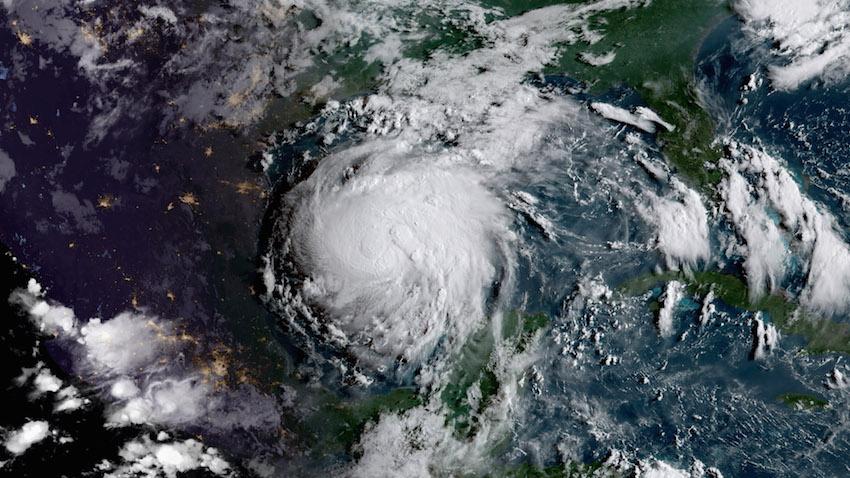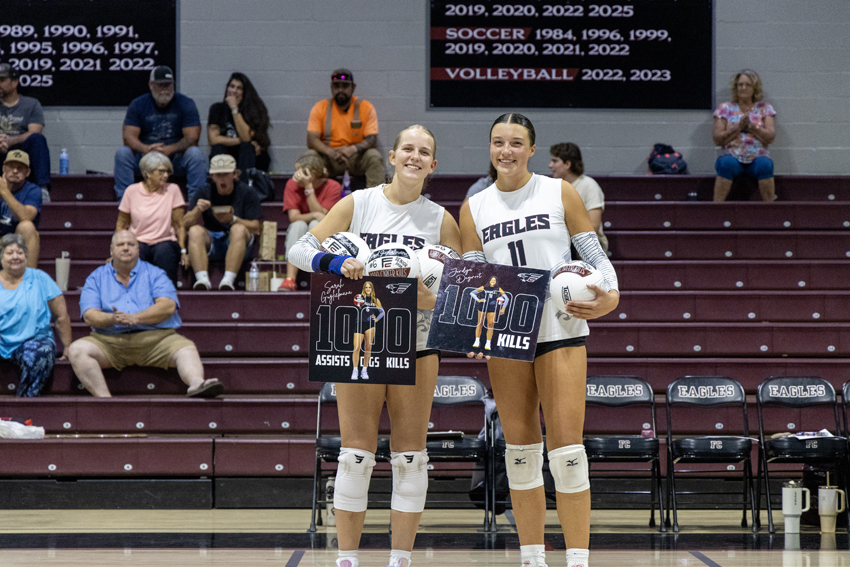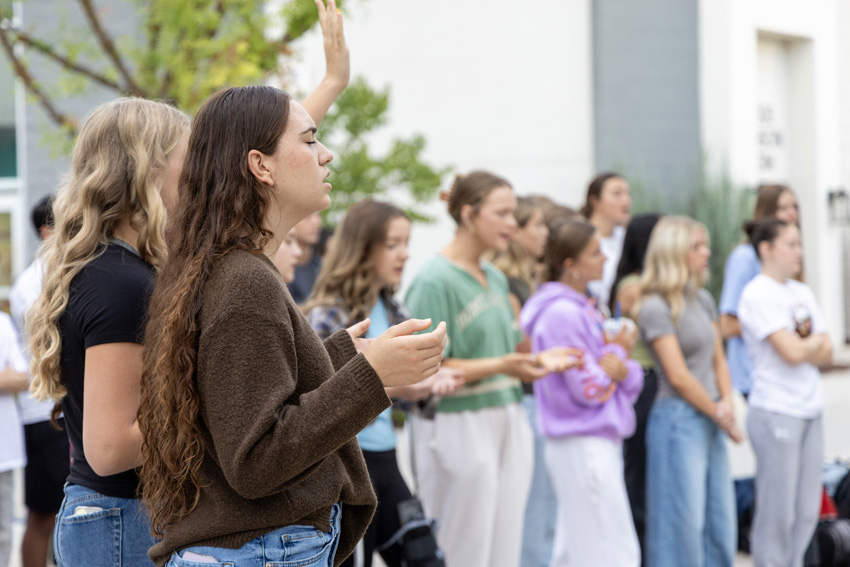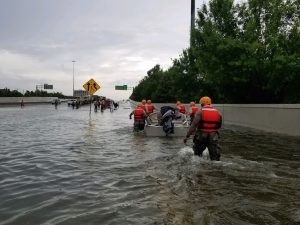
Disaster in Texas
The worst flooding disaster in U.S. history, Hurricane Harvey, struck Texas. The first major hurricane of the 2017 Atlantic hurricane season flooded more than 50 inches of rainfall and caused more than 30,000 people to evacuate their homes.
Harvey grew in strength from a tropical wave in the Lesser Antilles. It reached tropical storm status, Aug. 17. The cyclone then moved into the Caribbean Sea, weakening and downsizing into a tropical wave, Aug. 19. The remaining parts remained monitored as it moved towards the west across the Caribbean, before redeveloping in the Bay of Campeche.
Harvey then rapidly intensified on Aug. 24, regaining storm status and becoming a hurricane. It became a Category 4 hurricane, Aug. 25 and landed in Texas at peak intensity.
The hurricane caused major damage to southern Texas with winds gusts observed up to 132 mph and entire blocks flooded. Preliminary FEMA (Federal Emergency Management Agency) estimates as many as 67,000 homes in Texas may be damaged.
Throughout Texas, more than 300,000 people were left without electricity and communication systems went out, including landline, cellular, internet, and mass media platforms. More than 725,000 people are currently under mandatory evacuation orders, while over a million face voluntary evacuation orders.
NOAA (National Oceanic and Atmospheric Administration) stated they had never seen anything like this before. The area of Texas that rests underwater is equivalent to the size of Lake Michigan.
Alumna Elizabeth Baker, ’17, stayed in Texas for a couple of weeks to attend the University of the Incarnate Word. Although the hurricane did not affect her, the weather drastically changed in her area.
“It was kind of scary at first, but San Antonio didn’t really get hit very hard,” Baker said. “It did rain hard for a few days straight, and the wind was really strong. A lot of people at my school have family members in the affected areas, so I’m just hoping they will receive help.”
According to the National Hurricane Center, Harvey is moving northeastward toward the Ohio Valley and weakening into Saturday. Flash flood warnings are in effect from parts of Mississippi across western Tennessee and southwest Ohio.
As of August 30, the death toll has tragically risen to 39.
American Red Cross sends aid
American Red Cross is an organization that prevents human suffering in emergencies by encouraging the power of volunteers and the generosity of donors. They assist everywhere they can, including the affected area of Texas.
American Red Cross has sent over 80 tractor-trailer loads of supplies to southern Texas. The supplies support six kitchens, each able to produce 10,000 meals per day, totaling to 60,000 meals a day. Furthermore, over 73,000 ready-to-eat meals are currently on the ground with an additional 43,000 on its way.
Along with their partners, they have already served nearly 30,000 meals and snacks since the storm began. Nearly half of their emergency response fleet — 200 emergency response vehicles – have been activated for the supply operation.
The organization has pre-positioned additional blood products in Houston ahead of the storm, along with more blood product inventory in Dallas. They are closely working with local and federal authorities to continue the distribution of blood products to the needed areas.
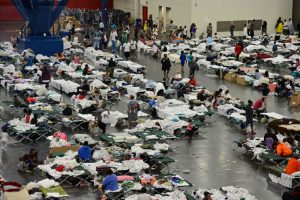
“Once we heard that Harvey was going to hit, we started putting shelters on standby last Thursday,” said Taylor Poisall, the Business Operation Coordinator at American Red Cross. “We had about 100 shelters on standby, ready to be open once they were needed. So that meant we needed to start shipping all of our supplies some of these houses we had opened, getting them ready with comfort kits.”
ARC is partnering with the United States Coast Guard and the Texas National Guard to move supplies and volunteers. They are working day and night to get help, doing all that they can.
Water rescues are ongoing, and evacuation orders are in still effect throughout the region. The American Red Cross has trained numbers of volunteers are ready to go.
In Texas, more than 1,800 ARC volunteers took refuge from the storm on Aug, 26 night, in 34 Red Cross and community shelters. But in Louisiana, the American Red Cross expects more volunteers to help, and additional shelters could open.
ARC initially estimates that over 17,000 people sought refuge in more than 45 shelters across Texas. This number includes over 8,000 evacuees at the George R. Brown Convention Center in Houston.
“By Aug. 29, there were over 32,000 people staying in Red Cross shelters and partner shelters.” Taylor Poisall said. “The American Red Cross has enough shelter supplies in Texas, can support 28,000 people and supplies for an additional 22,000 people are being sent in now. And there are 1,000 volunteers will be joined in a highly-skilled group from the Mexican Red Cross, help support shelters, distribute aid, and connect with Spanish speaking victims.”
The American Red Cross is also going participate in the damage assessment, to assist victims of recovery plan once they are able to go back home.
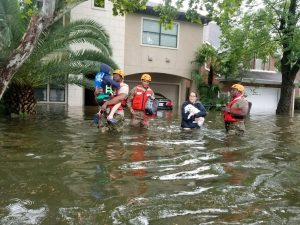
How to be involved
Rain continues to fall as thousands of people have already been forced to abandon their homes, leaving everything they own behind. It is anticipated that many more families will be impacted as rain continues to fall and flooding persists.
Hundreds of Red Cross employees are already on the ground working long hours to take care of Americans in need, and this will continue for weeks. They are doing an amazing job, but they will get tired and they will need relief.
Hurricane Harvey creates more needs than any one organization can meet on their own. ARC is working very hard with the entire response community, such as government agencies and other non-profit groups.
Fresno Christian is also planning on cooperating with Convoy of Hope. Students and parents can donate to the cause during football games or by visiting the office.
The senior class also plans on raising money for the Red Cross during homecoming week. Senior Erin Wilson hopes to raise awareness and support for the cause.
“We are cooperating with the Red Cross for our homecoming float,” Wilson said. “This means we will be working to gather money all through homecoming week and even the night of to donate to them.”
This is a time for communities to come together and support the outside world. The best way for them to support is with a financial donation, rather than sending food and clothes. The American Red Cross is the biggest non-profit organization in the nation and relies solely on donations.
Donate to Harricane Harvey through American Red Cross.
The ARC chapter in Fresno area is the Central Valley Chapter. This chapter is sending supplies and volunteers to the disaster and partnering with the local media to be able to directly help victims. The ARC Central Valley Chapter also supports local disaster victims such as those affected by the recent wildfires.
The ARC encourages students to join the organization to help the community. If you are interested, you can contact Keith Zhu, Community Ambassador of the American Red Cross at Fresno Christian.
For more Top5 articles, read: ROAD TRACE: Journalist shares English summer adventure.
For more News articles, read: Choir begins fundraising for New York.
These authors can be reached via email: Kamryn Schultz and Keith Zhu

